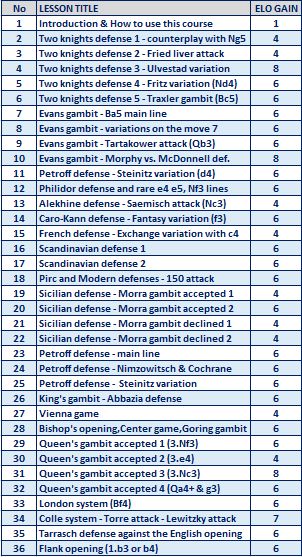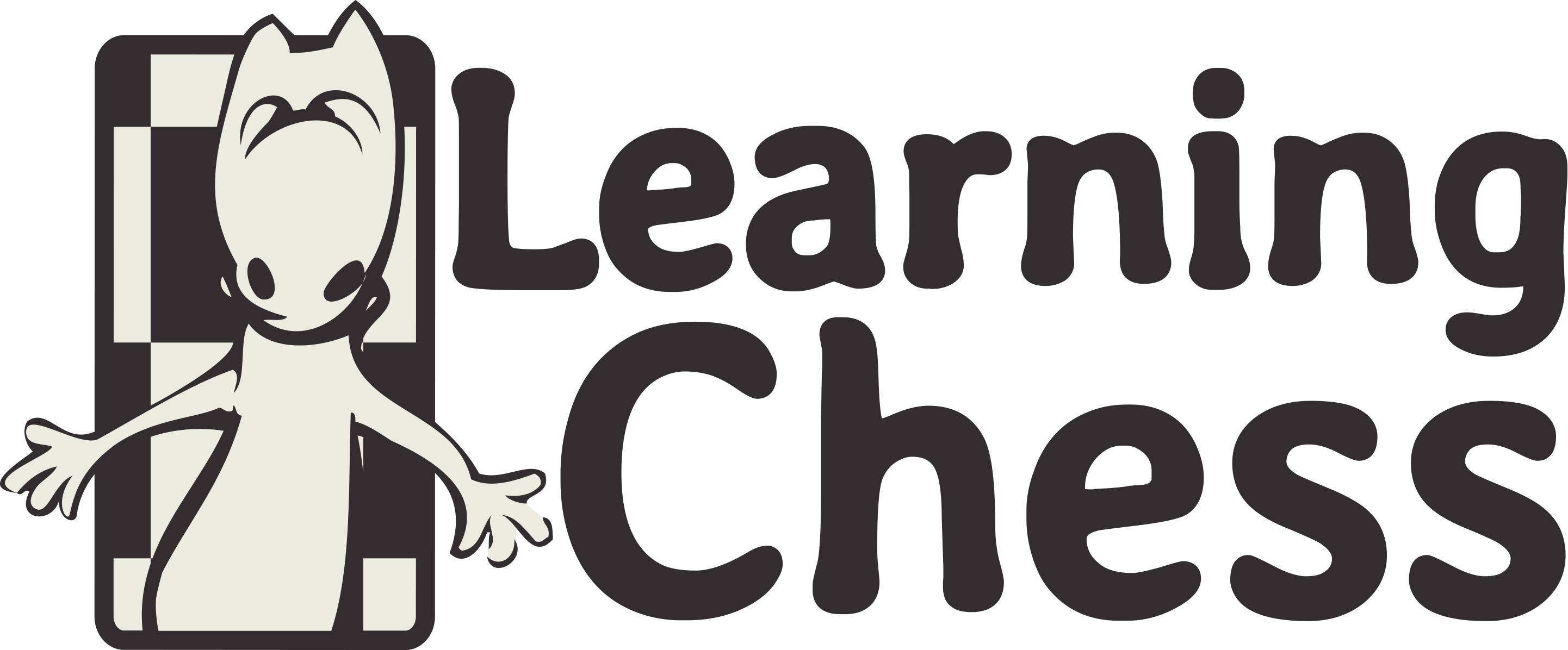Our users can track their progress visually (through ranks) and numerically (through ratings). To measure progress, we base it on the success of solving end-of-lesson tests. Solving each tests perfectly, achieving 100%, increases the rating points by a specific value. If learners do not reach 100%, they receive proportionally fewer points.
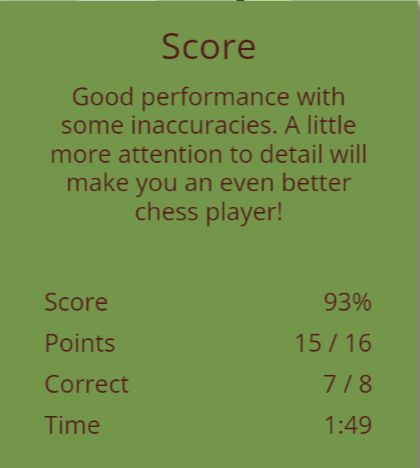
It is important to note that the ‘flying numbers’ after the right solutions visible on individual test tasks only indicate the task’s difficulty and help calculate the percentage. The table at the end of our post shows how many points each lesson adds to the rating, providing you with a comprehensive understanding of the scoring system.
Several users have requested the ability to repeat the end-of-lesson tests without reviewing the lessons again. However, we are strict here for educational reasons.
Points are awarded for a test question only once. If you use the back button to return to a previous test task, you will not get any points and see that the “flying number” no longer appears.
It is also impossible to repeat just the test questions for a lesson. With the Restart Lesson function, you must start from the very beginning of the lesson. We believe that repeating the whole lesson gives more profound knowledge and confidence in the tests.
Now, let’s look at the two measurement methods and their relationship.
RANKS
After logging in, newly registered users land on the My Progress page. Here, in the upper left corner, an iron pawn shows the starting rank.
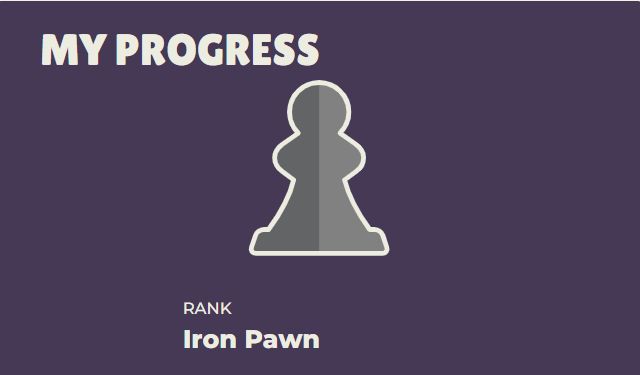
As you delve deeper into your learning, your active participation in solving end-of-lesson tests will be the key to your progress. Your rank will evolve from an ‘iron knight’ to an iron bishop, and so on, reflecting the strength of the chess pieces. The colors of the pieces will change in the order of iron – bronze – silver – diamond. You can reach the’ diamond king’ rank after completing the four courses (Level 1-2-3, Opening Repertoire).
We always celebrate together with the following animation when a new rank is achieved. Example:
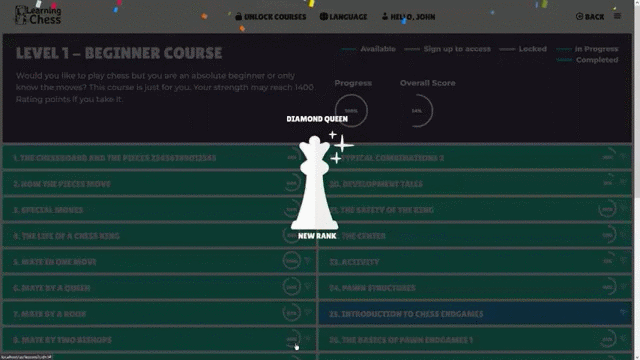
At the end of the blog post, there is a table that describes the relationship between the ranks and rating points that can be earned in each lesson.
RATING POINTS
Similarly to APT/WTA points in tennis, there is an official scoring system called ‘ELO rating’ points in chess to mark a player’s strength. That is the same for men and women. Absolute beginners start from 1000 rating points and become strong players when they reach 2000 or more rating points.
With each end-of-lesson test solution in LearningChess, you gain virtual rating points. These points, gained in our system, are a true measure of your progress, just as ELO points are in real chess games. If you reach 1700 rating points while learning with us, you can be confident that your performance will be on par in real chess games.
New users receive 1000 rating points, which they can see on the My Progress page after logging in.

In LearningChess, you can reach 2000 rating points after completing the four courses (Levels 1-2-3, Opening Repertoire).
At the end of the blog post, there is a table that describes the relationship between the ranks and rating points that can be earned in each lesson.
RANKS – POINTS – LESSONS
The tables below show the relationship between the lessons and the obtainable ranks and ration points.
Ratings and Ranks correlation

Virtual ELO gain in the Beginner and Intermediate courses (at 100% score).
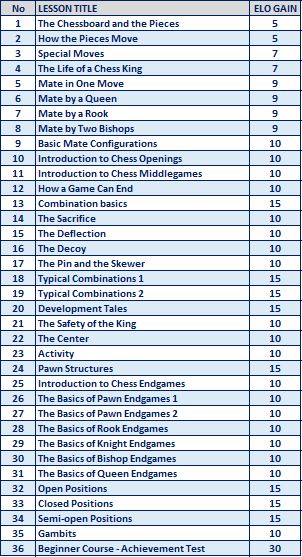
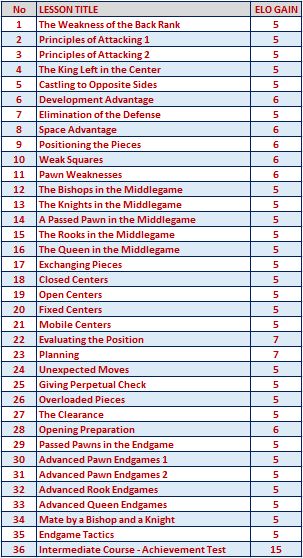
Virtual ELO gain in the Advanced and Active Opening Repertoire courses (at 100% score).

